
Key Points
- NASDAQ 100 Endures the Most Pain, Now Testing a Key Level
- False Breakout in the Discretionary/Staples Ratio Dashes the “Risk-On” Theme
- Lumber vs. Gold Stalls, Lacks Upside Momentum
- Growth Fades Relative Value
- Moving From “Buy Dips” to “Sell Rips” as the Base Case
Chart in Focus:
The NASDAQ 100 index has sustained more damage than other major markets in the U.S. over the past few weeks. Selling pressure has brought the index to a key level, the 38.2% retracement of the advance from the May lows to the September highs. If the index is going to make a stand, this is a logical level. However, if 14,650 is lost to the downside, there is scope for the NASDAQ 100 to move down to the 13,600 – 14,000 zone.
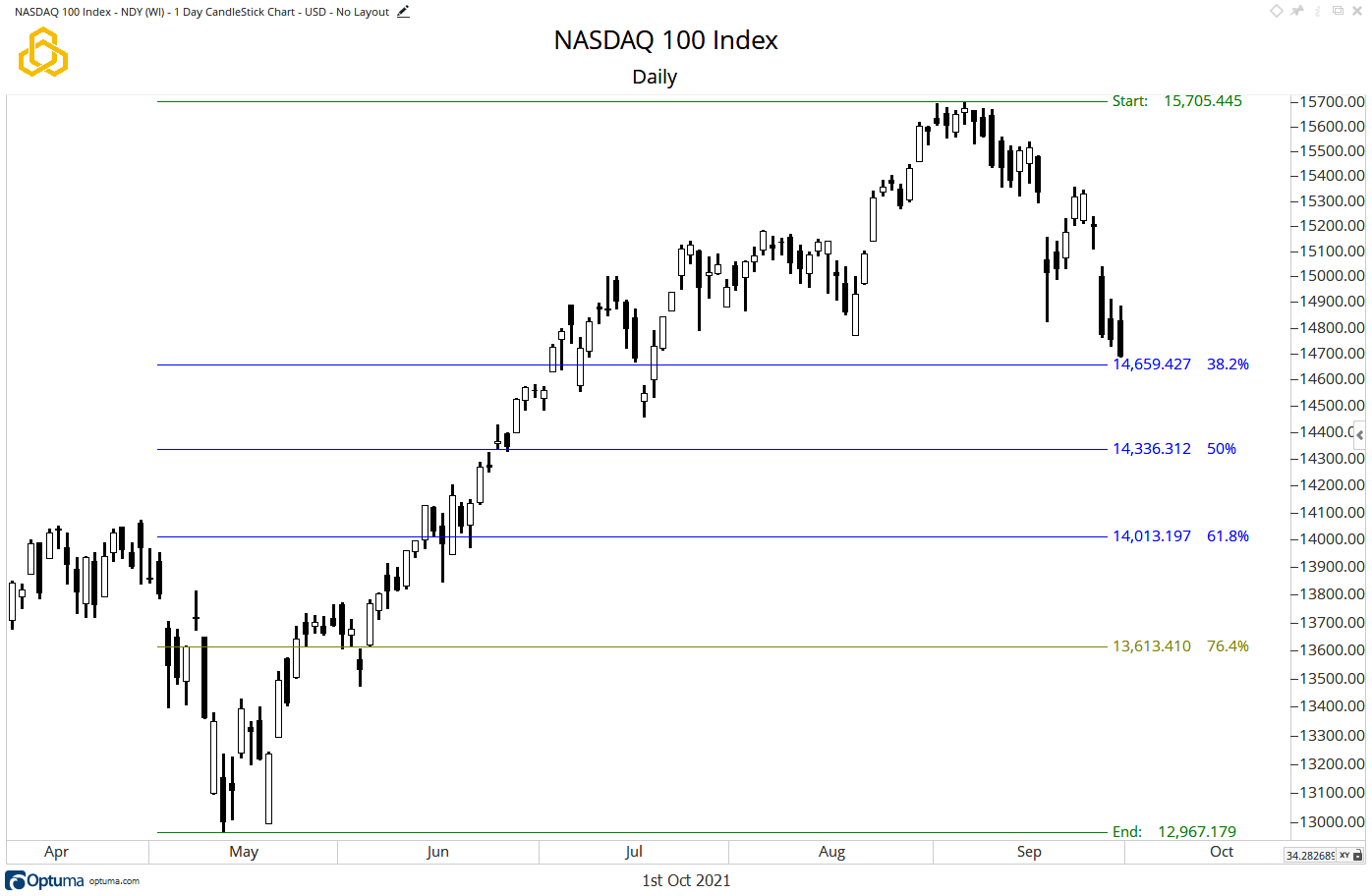
The following relationships can help give us a sense of the level of risk appetite on the part of investors.
High Beta vs Low Volatility
The High Beta to Low Volatility relationship continues to trade in a consolidation, with the advantage remaining with High Beta for now. The ratio is above the 50 and 200-day moving averages, which are likely to act as support to a pullback in the near term. At the same time, the 14-day RSI continues to make higher lows as it shifts to a bullish regime.
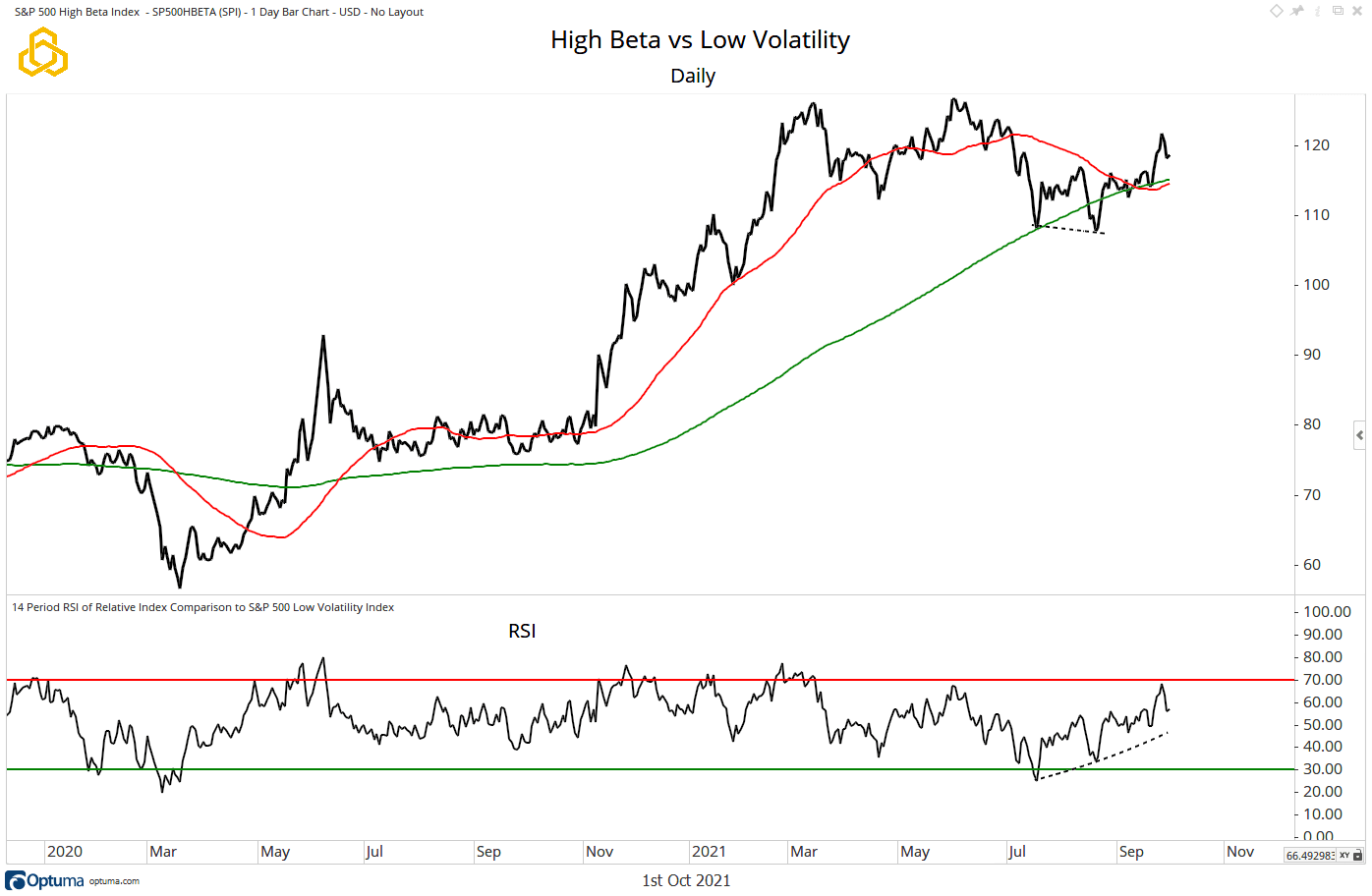
Consumer Discretionary vs Consumer Staples (Equal Weight)
The ratio of Consumer Discretionary stocks relative to Consumer Staples stocks has pulled back into the consolidation that has marked trading since April. While the ratio remains above the rising 50 and 200-day moving averages, the pullback into the consolidation zone sets up a dynamic where last week’s strength was a false breakout. The 14-day RSI confirms this view as it moves back below the trendline.
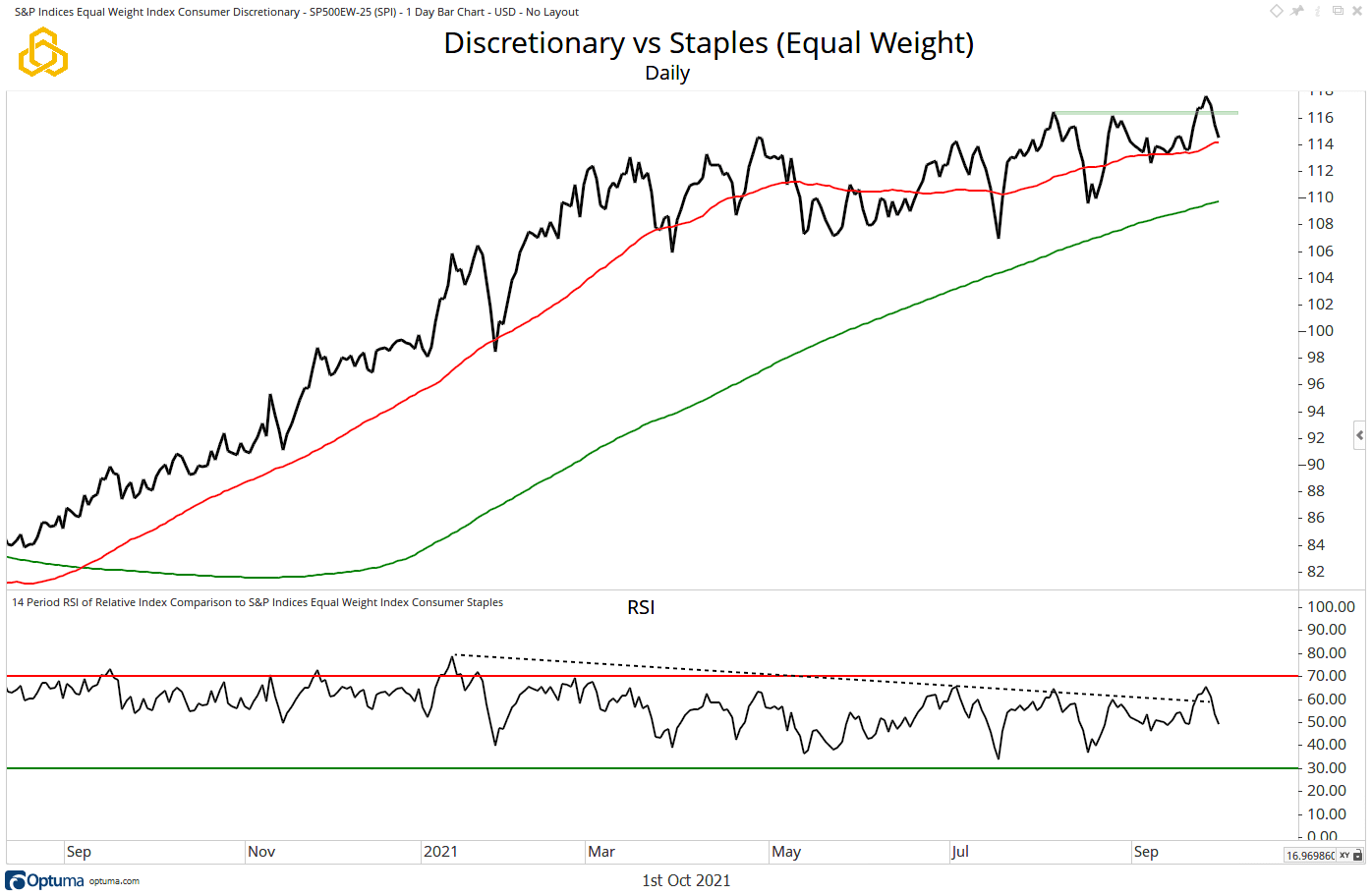
Copper vs Gold
The Copper/Gold ratio remains in the consolidation that we have been highlighting for the past few weeks, struck between price-based support and the resistance at the 2018 highs. This week, the ratio has also fallen back to trade between the 50 and 200-day moving averages. The 14-day RSI confirms the consolidation in price, as it trades in the middle of the range.
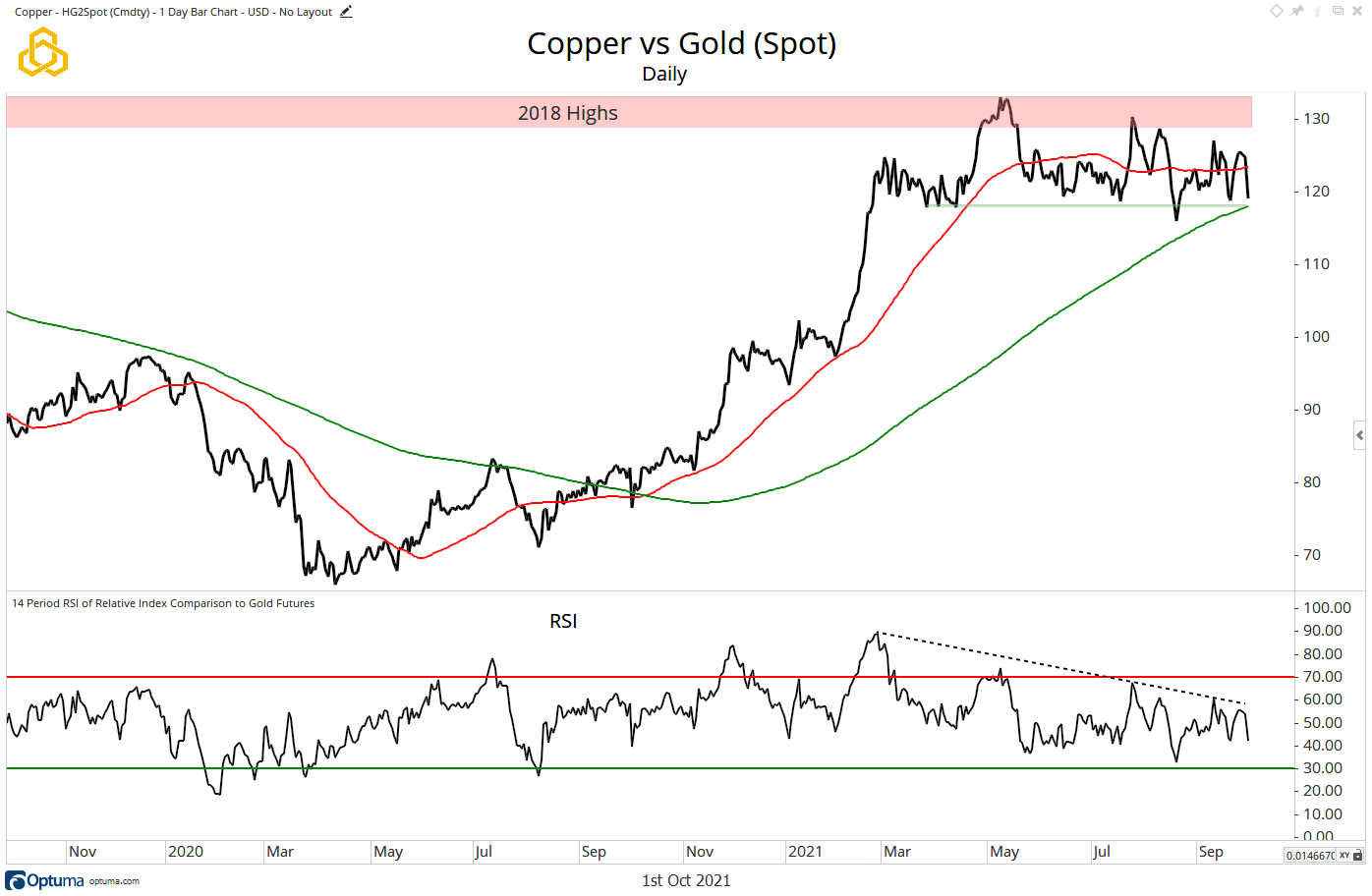
Lumber vs Gold
The Lumber/Gold ratio is taking a pause after a strong move from support, which took it through the 50-day moving average. The 14-day RSI is also stalling just below overbought levels after making a series of higher lows. To have confidence that upside momentum is sustainable, we want to see the RSI become overbought on price strength. Thus far, that is not the case.
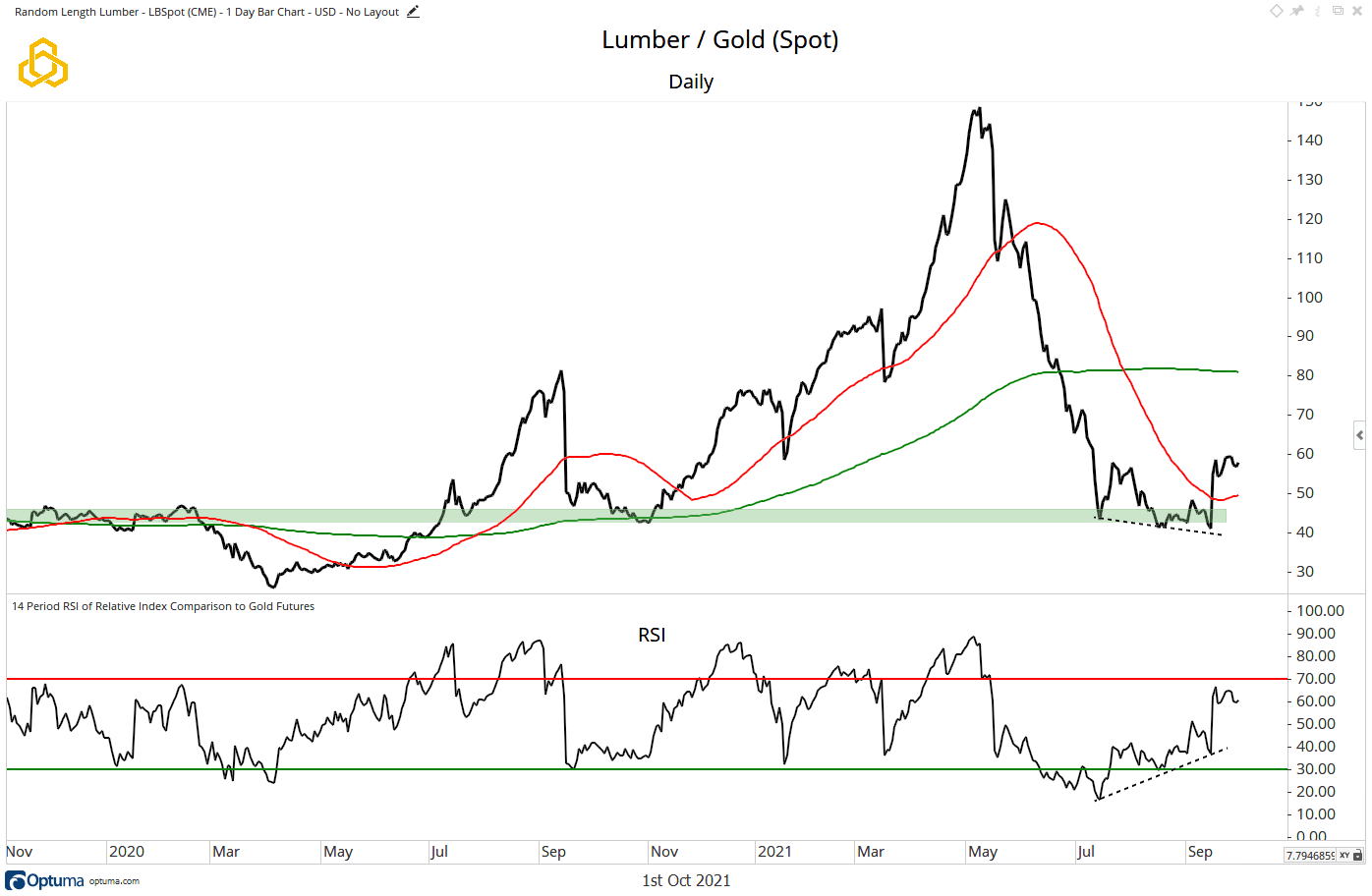
Small vs Large
The ratio of Small Caps vs. Large Caps is also showing signs of stalling after a strong move to the upside that broke the 50-day moving average. The ratio remains below resistance and the 200-day moving average, which are in line with each other. Here too, the 14-day RSI failed to reach overbought levels on the initial price strength.
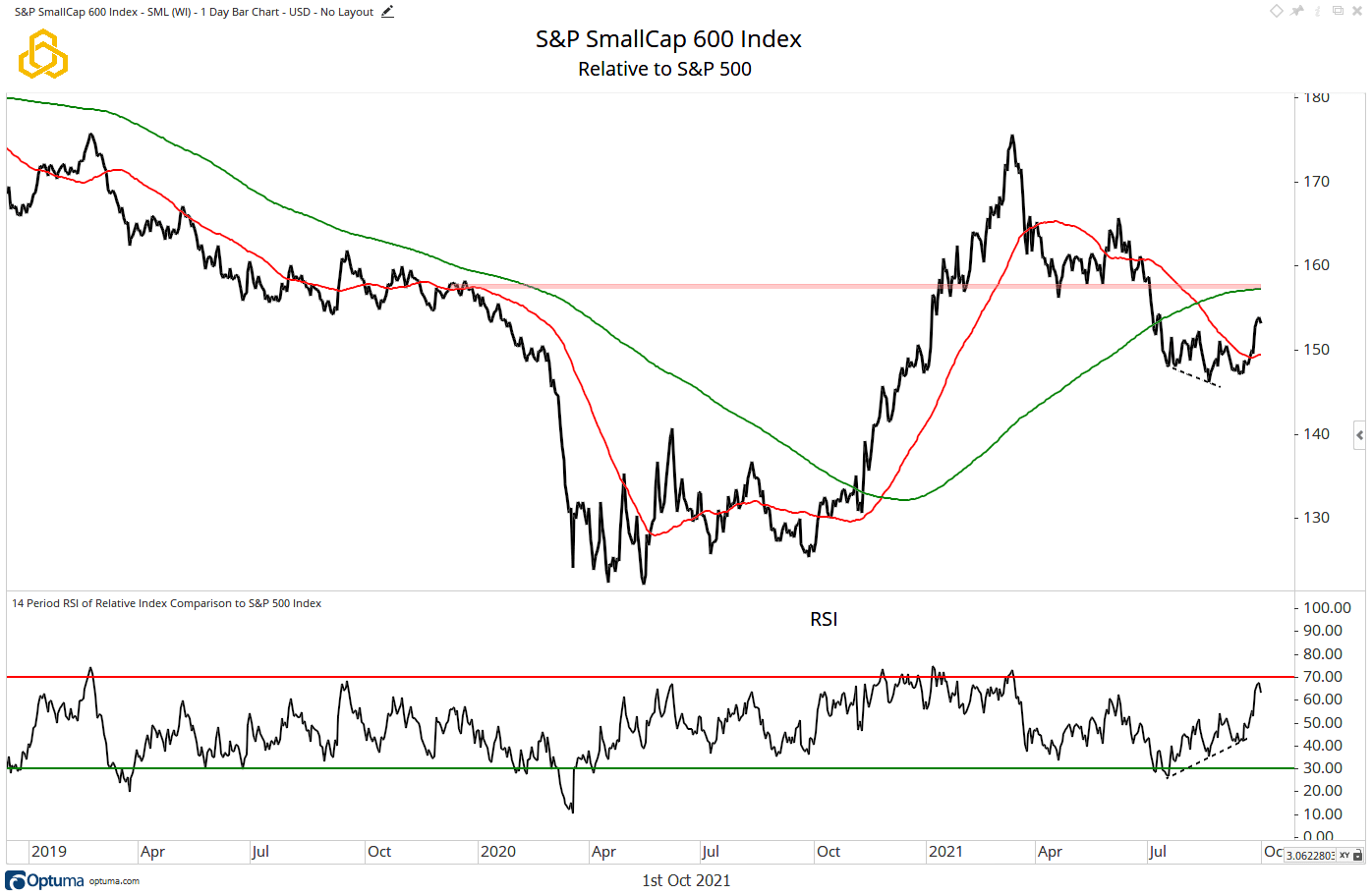
Growth vs Value
The Growth/Value ratio has faded from resistance near the highs from last year after the 14-day RSI made a lower high and has broken back below the 50-day moving average. While the ratio is above the 200-day moving average, odds favor a continuation of choppy trading, with swings in leadership.
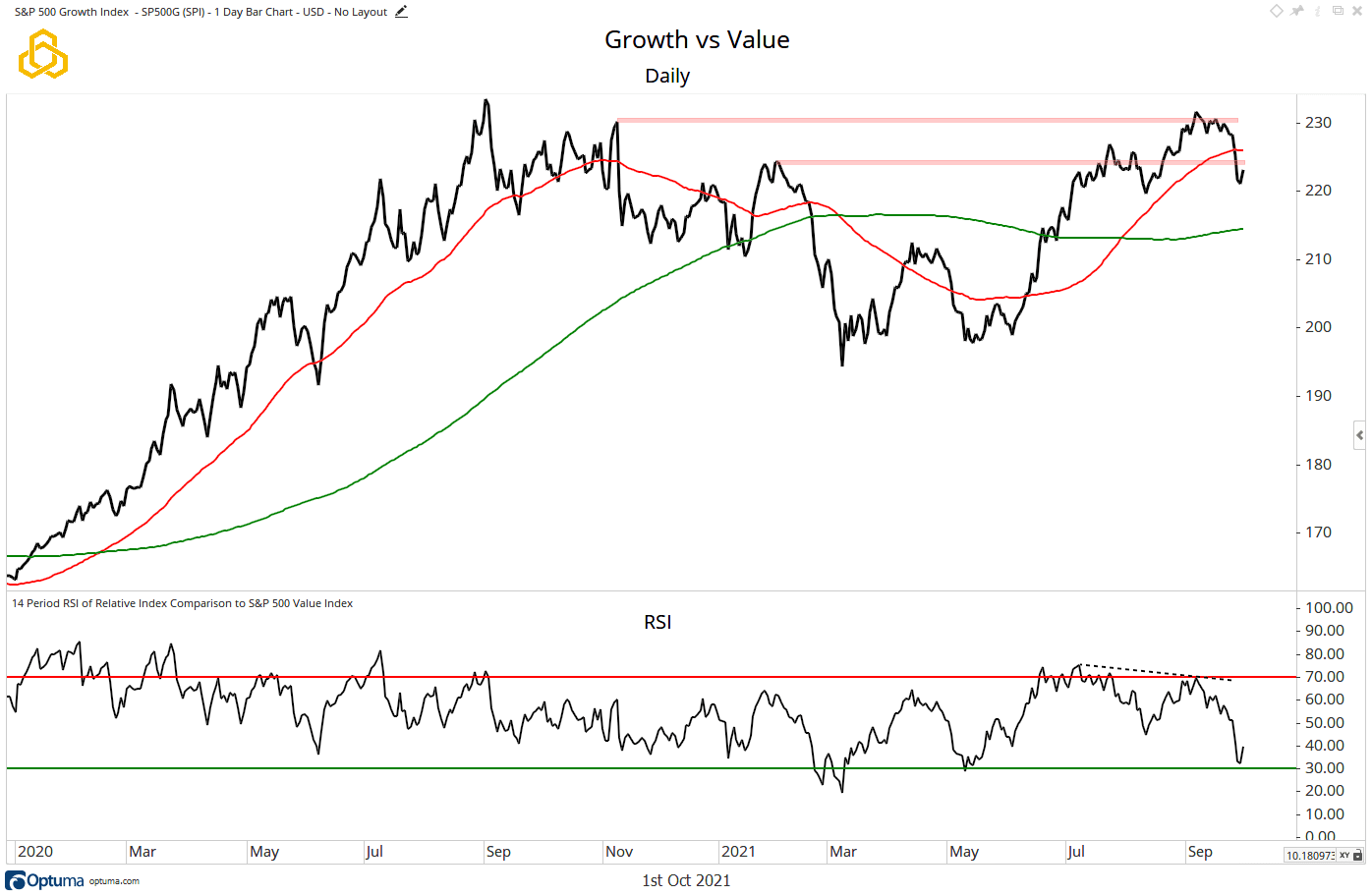
Take-Aways
It’s a sloppy mess out there as the fourth quarter begins. While we have highlighted signs of increased risk appetite over the past two weeks, those signs are abating. Potential new trends in the Small vs. Large and Lumber vs. Gold ratios lack the upside momentum that we like to see if moves will be sustained. The failed breakout in the Discretionary vs. Staples ratio is another example of the “risk-on” theme not getting much traction.
Odds favor a continuation of the trend that has been in place for most of the year, shifts in leadership without one theme taking a clear advantage. At the same time, we continue to see signs that the market has tilted from “buy the dip” to “sell the rip,” as early-day strength is faded multiple times this week.
Disclosure: This information is prepared for general information only and should not be considered as individual investment advice nor as a solicitation to buy or offer to sell any securities. This material does not constitute any representation as to the suitability or appropriateness of any investment advisory program or security. Please visit our FULL DISCLOSURE page.
